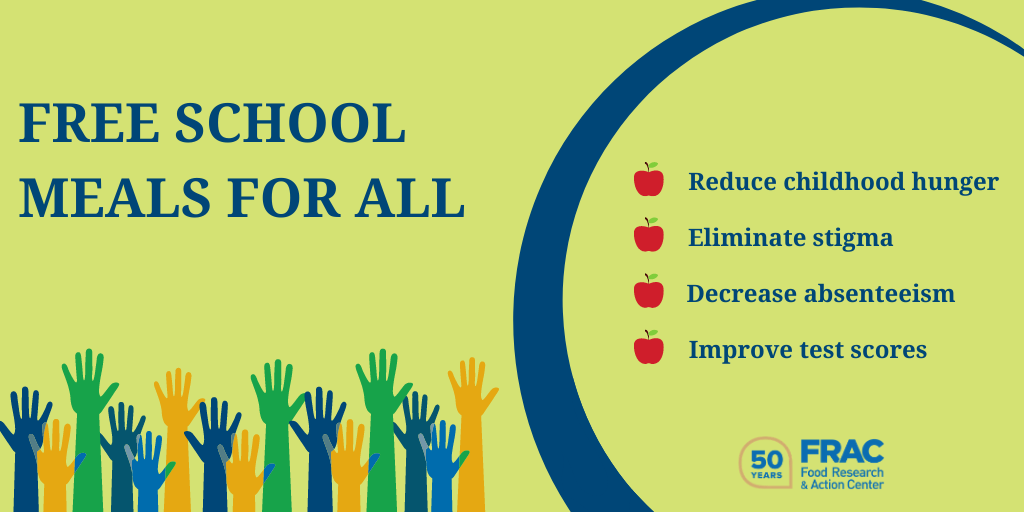March 2, 2021
Serving free school meals to all students is a gamechanger for students, families, and schools, supporting students’ education and health and improving school nutrition finances and operations. Currently, schools across the country are able to offer free meals to all students under the child nutrition waivers that USDA has issued to support access to meals during the pandemic. In the 2020–2021 school year, more than 30,000 schools (1 in 3 schools operating the school breakfast and lunch programs) were offering free school meals to all students through the Community Eligibility Provision. Looking ahead to life after the pandemic, Free School Meals for All should remain for all schools across the country.
In December, FRAC and 63 other national organizations sent a letter to President Biden’s transition team urging them to work with Congress and to take every administrative step available to them to establish free school meals for all kids. As Free School Meals for All bills are being introduced in state capitols, the Biden administration and Congress can leverage the energy and momentum behind Free School Meals for All and lead on this important issue by implementing policies to expand access to school meals at the federal level as well.

To underscore the importance of Free School Meals for All, FRAC has compiled a list of FAQs below.
How do school meals positively impact kids?
School meals
- reduce childhood hunger;
- decrease childhood overweight and obesity;
- improve child nutrition and wellness
- enhance child development and school readiness; and
- support learning, attendance, and behavior.
What are the benefits of offering Free School Meals for All?
Currently, only students from homes with incomes below 130 percent of the federal poverty level are eligible for free school meals. Many struggling families do not qualify and school meals fees create a financial barrier to participation in school meals programs, but offering Free School Meals for All eliminates the cost barrier for children whose families’ income is near the cutoff line to receive free school meals. By providing every student the opportunity to participate in school meals, the stigma some children fear of being labeled “poor” by their classmates is eliminated.
How would Free School Meals for All impact school nutrition departments?
Schools would no longer have to collect and process school meals applications and complete other paperwork. Schools would no longer struggle with collecting unpaid school meals fees from families or foot the bill for meals served when children do not have money to pay for them. Removing this dynamic between families and schools allows school nutrition staff to focus on preparing and serving healthy meals to children, and it eliminates a significant financial burden for school districts and families.
How would Free School Meals for All support academic achievement?
There is a strong body of research that links participation in school meals to increases in the educational and health outcomes for our nation’s children. Studies have shown participation in school meals improves students’ attendance, behavior, and academic achievement, and reduces tardiness. Students who eat breakfast at school perform better on standardized tests than those who skip breakfast or eat breakfast at home, and have improved scores in spelling, reading, and math. School breakfast participation also improves students’ dietary intake and may protect against childhood obesity, and improves students’ mental health by reducing anxiety, depression, and hyperactivity. Investing in these programs to ensure all children — regardless of income — can access healthy meals year-round would help ensure that every child would be ready to learn and thrive.


